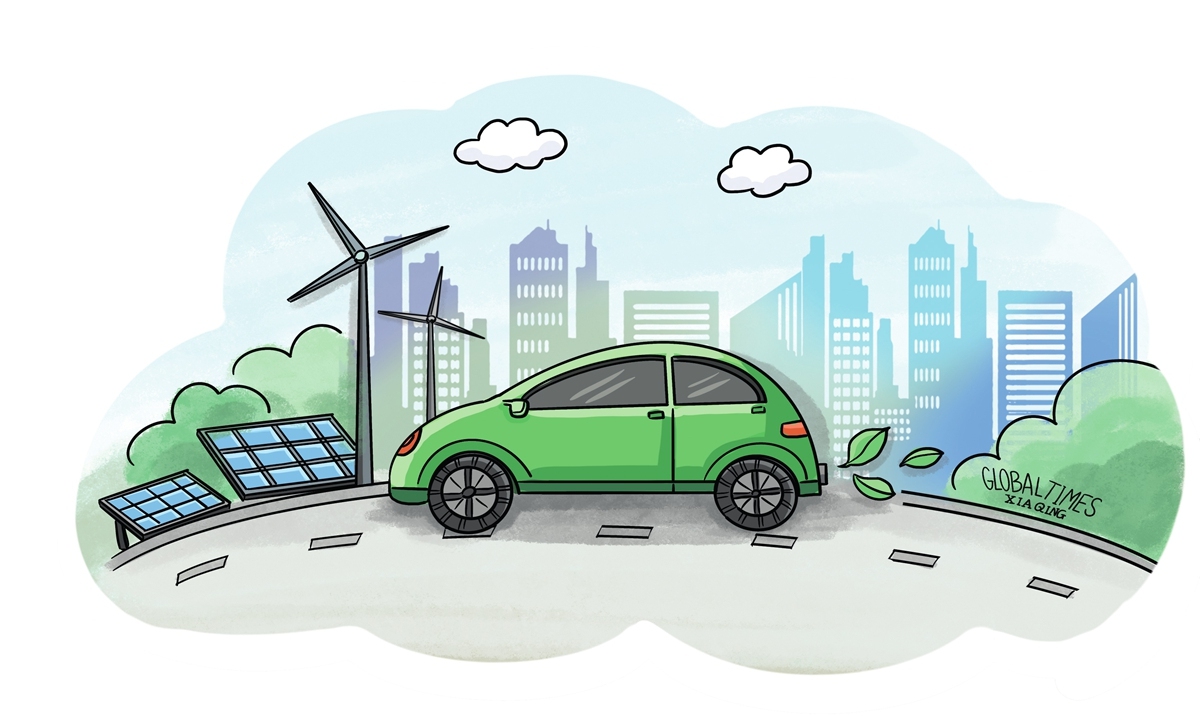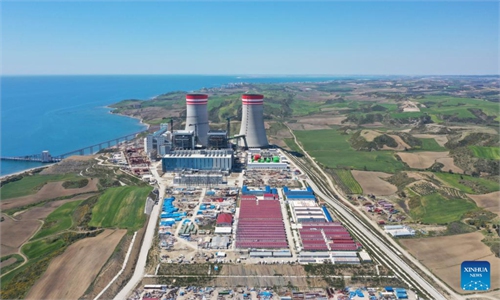
Illustration: Xia Qing/Global Times
There was some encouraging climate action in 2022, but the world remains far off track to meet the set goals of reducing global heat-trapping carbon dioxide emissions and limiting future planetary warming to limit climate change. Environmentalists have called for a strong collective commitment and concerted efforts toward slashing emissions in 2023, if the world wants to keep climate extremes from becoming even more devastating.The transport sector figures prominently on the green growth agenda. It has major environmental impacts in terms of greenhouse emissions. Managing congestion more effectively is part of the broader agenda for more sustainable development and better use of resources invested in the infrastructure. Over past years, some countries financed car scrapping and replacement schemes as a short-term response to restrict pollutants setting off into the air. Green growth includes durable economic activity, reduced environmental impact and sustained growth in high quality jobs.
In China, achieving carbon peak by 2030 and carbon neutrality by 2060 is a major, solemn strategic decision made by the central government. The goals commit to the sustainable development of the nation and the country's building of a community with a shared future for the mankind. However, compared with many Western developed economies, the time window for China to develop from carbon peak to neutrality is relatively tight, so the country needs to gear up efforts.
In transport sector, the central and local authorities should follow a path of coordinating low-carbon synergistic approach. From the perspective of international experience, the low-carbon transport development requires growing attention to policy synergy - encompassing the so-called full-chain extension of the sector, including urban bus and subway commuter system, waterway shipping, long-distance passenger and freight transport by buses and trains, and air flights. From the phases of planning to construction, operation and management, the government needs to strengthen guidance and oversight to restrict energy consumption and reduce emissions.
In the coming months and years, enhanced efforts should be channeled to coordinating the growth of various means of transport sector by giving full play to the comparative advantages and their combined efficiency, increasing the proportion of railway and water transport in the comprehensive transport system, improving the facilitation of hubs transfer, ramping up the construction of green transport infrastructure, upgrading green facilities, and phasing in a green and low-carbon transport organizational system in the country in order to reduce energy consumption and carbon dioxide emissions throughout the whole transport cycle.
And, it is also imperative to refine green development concept in the course of implementing high-quality transport sector development. It is broadly advocated that public transit systems in China's major city clusters and the high-speed electrified railways linking the clusters, be constructed and put into use rapidly across the country, which will spearhead the transport sector's transition to simple, green and low-carbon growth.
At the same time, new-energy vehicles such as electric cars should be vigorously promoted to the general public to supplant combustion-engine gas-guzzlers like SUVs that spew large volumes of pollutants. Over the past two decades, China has invested heavily into building more than 42,000-km high-speed railways by 2022, the longest in the world, which has made great contributions to cutting greenhouse gas emissions.
The key to the country's promotion of carbon peak and carbon neutrality in transport is to optimize resource allocation, improve the sector's overall productivity and continuously fine-tune the input and output ratio of the industry. It is necessary to improve the efficiency of transport resource allocation, and persistently accelerate the optimization of transport sector structure that is more sustainable and uses less energy.
In most Western developed countries, they generally attach importance to the application of demand-side transport management, say the Transit Oriented Development (TOD) strategy in Britain, incorporating inner-city congestion charging and low-emission zone charging, and the Vehicle Quota System (VQS) and Area Licensing Scheme implemented in Singapore. Through guidance and control of transport demand, a two-way balance of supply and demand that saves energy could be attained.
Also, the requirements for carbon peak and neutrality ought to be fully integrated into the medium and long-term development plans of all the provinces and cities in the country. It is necessary to strengthen the coordination of transport sector layout, construction and green-policy implementation. Penalties would be imposed on those entities that are energy-intensive and emits large-volume of carbon dioxides and other chemical particles that endanger the earth's atmosphere. Managing transport congestion is central to sustainable transport infrastructure. The issue is most prominent on the roads, where charges can effectively address congestion levels.
Now, it is imperative for the world to reduce carbon-intensity of transport, for the sector is responsible for up to 20 percent of the global carbon emissions, yet it is often neglected when tackling global climate change.
Governments need to consider trade-offs across various policy objectives. Reducing emissions, for example, may increase costs to current road users in the short run. As green growth policies spread, it may be necessary to review the way the transport sector is taxed by the government. Key transport policies to achieve green growth include supporting electric buses and cars, vehicle replace schemes and high speed rail system. And, it is also necessary to consider introducing downturn congestion charges with charging systems set up around the world, and establish indicators to assess transport investments and policies.
The author is an editor with the Global Times. bizopinion@globaltimes.com.cn



